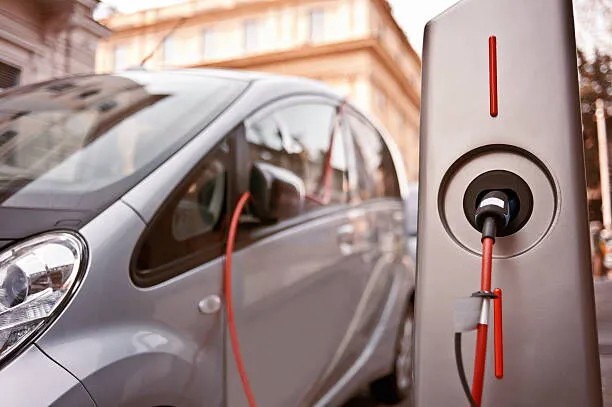As a trusted EV charger manufacturer in China, Topper Company provides dependable electric vehicle charging station equipment and comprehensive solutions.
Electric vehicle (EV) charging stations have become essential infrastructure in the transition toward cleaner, more sustainable transportation. These stations recharge EV batteries—whether at home or in public—and are a vital part of ensuring that drivers can power up quickly, conveniently, and reliably. This article explores how EV charging stations work, the types of charging technologies available, and the key differences between home and public charging options.
The Basics of EV Charging
EVs run on large battery packs that power electric motors instead of internal combustion engines. Charging stations serve as the bridge between these batteries and the electrical grid, converting grid electricity into a usable form for the vehicle.
There are two primary types of EV charging based on the electrical current used:
- AC (Alternating Current) Charging – Common for home and standard public use.
- DC (Direct Current) Fast Charging – Found mainly at public stations for rapid recharging.
Depending on the charger type, the conversion from AC to DC either happens inside the car (AC charging) or within the charger itself (DC fast charging). The efficiency, speed, and cost of charging all vary based on the type and setup.
AC Charging: The Standard for Most EV Owners
Level 1 Charging
- Voltage: 120V (standard household outlet)
- Speed: 2–5 miles of range per hour
- Use: Entry-level home charging
- Pros: No installation required
- Cons: Extremely slow; impractical for regular use unless charging overnight
Level 2 Charging
- Voltage: 240V (similar to dryers or ovens)
- Speed: 10–60 miles of range per hour
- Use: Home or public locations
- Pros: Faster charging, affordable setup
- Cons: Requires a 240V outlet and possible electrical panel upgrades
Level 2 chargers strike a balance between speed and cost. They're ideal for home use, workplaces, or places where cars are parked for several hours.
DC Fast Charging: Power for Long-Distance Travel and Public Use
Level 3 Charging (DC Fast Charging)
- Power Output: 50 kW to 350 kW
- Speed: 0–80% charge in 15–45 minutes
- Use: Highways, commercial fleets, urban fast-charging hubs
- Pros: Ultra-fast charging
- Cons: Expensive equipment and infrastructure; rarely used for residential settings
DC fast chargers convert electricity to DC on-site and deliver it directly to the battery, bypassing the vehicle's onboard charger. These stations are essential for reducing downtime on road trips and supporting commercial EV operations.
Home Charging Stations vs. Public Charging Stations
Home Charging
Home EV chargers, typically Level 1 or Level 2, provide the convenience of overnight charging. With a 240V outlet and a compatible wall-mounted unit, EV owners can ensure their vehicle is ready every morning. Installation may require a licensed electrician and electrical upgrades.
Benefits:
- Convenient and reliable
- Lower long-term charging costs
- Ideal for daily commutes and short trips
Public Charging
Public charging stations support drivers away from home, offering both Level 2 and Level 3 options. They are typically located in:
- Shopping centers
- Parking lots
- Urban centers
- Highways and travel corridors
Features:
- Fast charging available (DC)
- Usage fees often apply
- Essential for long-distance travel or fleet operations
The Future of EV Charging Technology
As EV adoption accelerates, innovation in charging technology continues to evolve:
Ultra-Fast Charging
New DC chargers capable of delivering up to 500 kW are under development, potentially reducing charging time to under 10 minutes.
Wireless Charging
Inductive charging eliminates cables—drivers simply park over a charging pad. This seamless, hands-free experience is gaining traction in smart city and public parking applications.
Vehicle-to-Grid (V2G)
Some EVs can now return electricity to the grid, supporting energy stability and offering backup power during peak demand or outages.
Conclusion
EV charging stations are the backbone of electric mobility, providing energy for millions of electric vehicles across homes, cities, and highways. Whether using a basic Level 1 charger at home or a high-powered DC fast charger on the road, EV drivers benefit from an increasingly sophisticated and accessible network. With advancements like ultra-fast and wireless charging on the horizon, and the integration of smart grid technologies, the future of EV charging is efficient, intelligent, and sustainable.
By understanding how EV charging works, both consumers and businesses can make informed decisions about adopting and investing in electric vehicle technology—driving forward the journey toward a greener future.Know more about Google SEO Directory





Comments